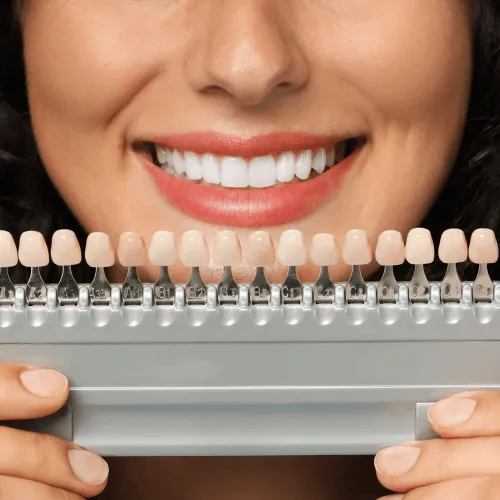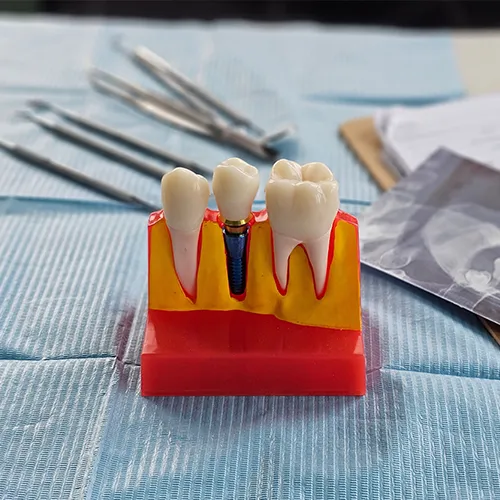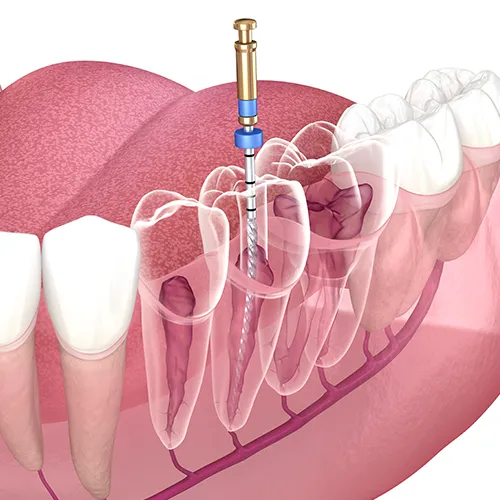General Dentistry
What Your Tooth Is Really Made Of
You probably brush your teeth every day, maybe even floss on a good week, but have you ever stopped to think about what a tooth actually is? Beneath that pearly white smile lies a surprisingly complex structure. At Akemi Dental Specialists, we believe the more you understand your teeth, the better you can take care of them. So let’s dig into the basics of what’s really going on inside that smile of yours.
What are the parts of a tooth?
Every tooth may look like a simple white block, but it’s more like a miniature building with different levels, each doing its own job.
- Enamel is the hard, shiny layer you see when you smile. It’s the outermost shell that protects everything underneath.
- Dentin sits right under the enamel. It’s yellowish and not as hard. If enamel wears down, dentin becomes exposed, and that can lead to sensitivity.
- Pulp is the soft center of the tooth. This is where the nerves and blood vessels live. When this part is irritated or infected, you’ll definitely feel it.
- Cementum is the layer that covers the root of your tooth and helps it stay attached to your jawbone.
- Periodontal ligament holds the tooth in its socket and acts as a cushion when you chew.
Think of it this way: enamel is the roof, dentin is the walls, pulp is the power system, cementum is the foundation coating, and the ligament is the buffer zone that keeps everything secure and in place.
What is enamel made of?
Enamel might seem like a simple white coating, but it’s actually the hardest substance in your entire body. Yes, harder than your bones.
It’s made almost entirely of minerals, especially a crystalline form of calcium phosphate called hydroxyapatite. These crystals are packed tightly together to create a tough barrier against everything you put in your mouth, hot coffee, cold water, crunchy snacks, and sugary treats.
But while enamel is tough, it isn’t invincible. It doesn’t contain any living cells, which means if it gets damaged or worn down, your body can’t repair it on its own. That’s why protecting your enamel is a big deal.
Here’s how enamel wears down:
- Acid erosion from soft drinks, wine, citrus, or stomach acid (especially in people with reflux).
- Brushing too hard or using a hard-bristle toothbrush.
- Grinding your teeth at night or during stress.
- Frequent snacking without rinsing or brushing afterward.
When enamel gets thin, dentin underneath becomes exposed, and that’s when your teeth may start to feel uncomfortable.
Why do my teeth feel sensitive?
If you’ve ever cringed while sipping something cold or hot, you’re not alone. Tooth sensitivity is incredibly common, and understanding where it comes from can help you get some relief.
Tooth sensitivity usually means the dentin layer is exposed. That can happen when:
- Enamel wears down from brushing too hard, grinding, or acidic foods.
- Your gums recede and expose the roots of your teeth. The root area doesn’t have enamel, only cementum, which is much thinner.
- You have cavities or tiny cracks in your teeth that let sensations travel straight to the nerve.
- You’ve recently had a whitening treatment or dental procedure that temporarily leaves your teeth a little sensitive.
Sensitivity doesn’t always mean something is wrong, but if it sticks around or gets worse, it’s worth bringing up. There are solutions, from desensitizing toothpaste to dental treatments that can help seal off exposed areas.
What does each part of a tooth actually do?
Now that you know the names, here’s what those layers are really doing for you:
- Enamel: Think of it as the armor. It guards against plaque, acids, and wear from daily life.
- Dentin: It transmits signals to the nerve. It’s more porous, which is why once it’s exposed, you feel more sensations.
- Pulp: The lifeline of the tooth. It nourishes the tooth and sends pain signals when something’s not right.
- Cementum and ligament: They keep your tooth securely rooted in your jaw, working together like a suspension system to absorb shocks while you chew.
Together, these layers create a strong but sensitive system that’s built to last, but only with proper care.
How do you keep the structure of your tooth healthy?
It’s not just about brushing and flossing. Tooth structure stays healthy when you take a few key steps consistently:
- Use a soft-bristled toothbrush and brush gently in circular motions.
- Floss daily to keep gums healthy and prevent gum recession.
- Watch your diet, especially if you enjoy acidic or sugary foods and drinks.
- Drink water after meals to help rinse away food particles and neutralize acid.
- Wear a mouthguard at night if you grind your teeth.
- Visit your dentist for regular checkups and cleanings. We can catch problems early before they become painful or expensive to fix.
What if your enamel is already damaged?
Good news, you still have options. While we can’t regenerate enamel, we can protect and reinforce what you have left. Fluoride treatments, bonding agents, or even porcelain veneers can help shield the tooth from further damage and reduce sensitivity.
If the inner parts of your tooth are affected, restorative treatments like fillings, crowns, or root canals can save the tooth and avoid an extraction.
Your teeth are more than just tools for chewing
They’re part of your facial structure, your smile, your speech, and even your confidence. And just like any important part of your body, they deserve your attention.
At Akemi Dental Specialists, we’re here to help you keep every part of your tooth healthy, from the enamel you can see to the pulp you can’t. Whether you’re due for a check-up or dealing with sensitivity, we’d be happy to take a look.
Book your appointment with Akemi Dental Specialists today. Your teeth work hard for you, give them the expert care they deserve.























